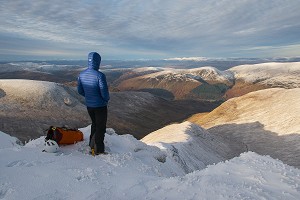
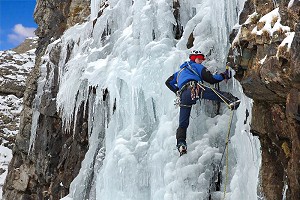
This article details the remit of the award, how to register for it and what exactly it covers. This article has been produced in conjunction with the Mountain Leader Training Association (MLTA).
VIDEO: Mountain Instructor Certificate
The Course
If, once you've got your MIA and Winter ML award, you want to make the step up to teaching and leading winter mountaineering, snow and ice climbing and related activities, you'll need to start training for the Mountain Instructor Certificate. NB For the purpose of MLTUK awards, 'winter' refers to winter conditions – that is when snow and ice prevail or are forecast – not to a time of year.
A day out in mountains in winter conditions is, of course, a far more intensive experience than in summer. You need greater fitness, better navigation skills and a whole range of winter specific skills and equipment.
Reviews are now in progress for both the MIA and MIC schemes, to ensure that the qualifications remain at the cutting edge of instructional qualifications and the MLTUK is currently looking at the possibility of setting up a parallel coaching qualifications structure.
AMI
The Association of Mountaineering Instructors (AMI) is the representative body for professionally qualified Mountaineering Instructors in the UK and Ireland, and offers benefits such as insurance, support, representation and networking.
What's the difference between the MIC and the MIA – other than the fact that the MIC covers winter mountaineering skills, the syllabuses seem the same?
"To use an analogy, A level maths is both similar and yet very different to degree level maths. The former is a necessity for the latter to 'make sense', and those teaching the latter assume a host of skills and knowledge covered by the former.
The winter environment is potentially more challenging and serious than the summer environment, and winter climbing is very different to summer climbing. The MIA and MIC are being reviewed and maybe there is a case for the syllabus wording to be more illuminating."
Jon Garside, MLTE Training Officer
Award Holder Profile - Alan Halewood
"The great thing about my work is the variety. I work at the Ice Factor, work for myself and freelance for others, too. My diary for a fortnight shows three days on Tower Ridge, a day teaching lead climbing to Adventure Tourism Management students, a weekend on Skye, an SPA assessment and day-to-day admin, maintenance and staff training at The Ice Factor.
Different seasons bring different work too. In the winter I might be teaching winter skills, mountaineering, or winter climbing. At the height of winter season it's easy to say 'yes' to everyone and take on too much. Spring brings Summer Mountain Leader and SPA courses, visits to climbing centres I am Technical Advisor to, rock climbing courses and Cuillin Ridge Traverses. During summer I head higher in the hills or to breezy coastal crags to avoid midges, and might be teaching mountaineering, rock climbing or guiding.
Autumn brings staff training for various organisations, mountaineering courses and mountain instructor award training and assessment courses. It's the time of year for AGMs and attending workshops for my own professional development. You can be asked for advice or training on any aspect of walking, climbing and mountaineering as well as high ropes courses, climbing walls or overseas work at any time of year and need to have the right answers.
The big step up from MIA to MIC proved as varied and rewarding as the work is now. It broadened my professional experience and I realised there is very rarely a 'right' or 'wrong' way to do things; you refine your judgement in achieving your (and your clients') goals. Passing wasn't the end. I'll spend the rest of my career learning more, different and better ways to use the MIC qualification."
- You can find out more about Alan Halewood on his website: www.climbwhenyoureready.com
Qualifying to register for the award
Before registering for the MIC, you must have gained the MIA and the Winter ML award. You need to have logged 20 days of winter group management (this can be both pre and post winter ML, but at least 10 days should be post), 10 routes of at least Grade II and 10 routes of at least Grade III.
What is a quality mountain day?
Quality mountain days should involve planning, exploration and navigation. As a rough guide, you should need a map and compass while you're out there, and you should feel the sense of achievement of having had a satisfyingly strenuous day out when you get back. Log a broad range of days from the lowest fells to the highest peaks. While experience abroad is valuable, the MIC is a UK-based qualification, so your experience needs to reflect this.
Training, consolidation and assessment
MIC training courses span five consecutive days. There are two approved course providers: Glenmore Lodge in Scotland and Plas y Brenin in Wales. All courses are run in the Scottish Highlands.
There is no chance of exemption from MIC training, because the training course includes some elements that, although they must be covered, don't feature in the actual assessment. Because the MIC is so diverse, individual advice is given to each candidate throughout the course, concerning what further experience each will need before the assessment. Make sure you bring your logbook to help the course director assess your strengths and weaknesses.
Once you have completed your training, you will need to consolidate and broaden your experience over a period of 12 months. Before the assessment, you will need to have logged another 10 days of winter group management, five more Grade II climbing days and be climbing comfortably at Grade III.
Assessment courses are run over four days and assess both personal and instructional winter climbing skills.
The syllabus
As well as all of the skills and abilities included in the MIA (which all MIC candidates MUST have passed) candidates will also cover:
Winter Mountaineering Skills: Personal and Instructional
Lead Grade III multi-pitch snow and ice climbs with confidence and safe techniques, and have a thorough understanding of both planned and emergency winter camp craft.
Choose routes or climbs to suit a group, taking into account weather and conditions. You'll also need awareness of the safety, control and technical skills needed when climbing, descending and retreating from snow, ice or steep and broken ground, including use of short rope techniques.
Structure teaching sessions and give demonstrations of appropriate techniques in all aspects of the basic winter mountaineering skills, including the use of standard equipment such as ice axe, crampons, basic belay techniques and winter navigation.
Understand snow and avalanche conditions and be able to provide an enjoyable, safe and instructive experience to novice climbers on snow and ice climbs up to Grade II.
Thoroughly understand the Winter ML, so that you can instruct and assess candidates.
Rescue Techniques
Carry and know how to use mountain rescue equipment for general and crag rescue situations. You'll also need to be able to assess an accident scene and carry out appropriate action, including casualty handling, knowledge of a variety of stretcher lowers and controlling the safe movement of a rescue team.
Knowledge of how to improvise rescue techniques using normal climbing equipment is also necessary: for example abseiling, lowering, hoisting, escaping the system and prussiking.
General Knowledge
Good, general background knowledge of the mountain environment and the history of mountaineering are essential to the MIC. You should be able to enthuse and educate others about mountain geology, natural history, flora and fauna, managing human pressures on wild country and conservation.
With regards to the history of mountaineering, you should read a wide range of mountain literature including instruction handbooks and guidebooks and understand the structure of the main mountaineering organisations.
Sample course content
Days may begin with observation of the weather and snow pack, and end with course review, recap, SAIS forecasts and evening sessions such as 'The role of the MIC' and 'Avalanches'.
DAY 1
Introduction and organisation
SNOWCRAFT
Technical skills: teaching of making a snow pit, step kicking/holding the axe, ice axe braking, step cutting - slash; side; bucket; slab step; pigeon and snow shelters.
Belays: bucket seat, basic rope work and belaying progressions from WML to climbing, deadman, buried Axe, T – axe, Snow Bollard, stomper belay.
DAY 2
ICECRAFT
Technical skills: cramponeering - flat; front point; hybrid, use of the axe from walking to simple climbing, bouldering with 1 axe then combination of axe and hammer, ice screw placements and belays, Bollards and Abolokovs.
Teaching: use of bottom and top ropes for teaching and coaching
DAY 3
MOUNTAINEERING
Route choice vs client/student abilities, evaluation of avalanche risk, safeguarding clients/students without rope, short roping.
Personal climbing ability and techniques (on Grade III ground): rope systems, stance organisation, location, preparation, rope management, belay systems, personal movement and technique, client care.
DAY 4
PERSONAL CLIMBING DAY
Expanding on the elements covered on afternoon of day 3.
DAY 5
CLIMBING TEACHING
Teaching, Coaching or Guiding: what is appropriate?
Approach, changeover form short roping to climbing at 1st stance, appropriate use of rope systems, descent
COURSE REVIEW
- Therm-a-Rest Navis Sleeping Bag 7 Jul, 2013
- Polvere Ski Mountaineering Skis 23 Apr, 2013
- Rab Infinity Down Jacket 7 Apr, 2013
- COMPARISON REVIEW: Mountain Hard Shells 4 Apr, 2013
- The Questionable Ethics Of Down Production 10 Jan, 2013
- VIDEO: The 1922 Trek To Everest Base Camp 23 Sep, 2012
- WITH VIDEO: NEW TNF Summit Series Meru Range 12 Sep, 2012
- Autumn/Winter 2012 Polartec NeoShell Mountain Clothing 7 Sep, 2012
- Patagonia Ultralight Down Jacket 5 Jul, 2012
- Barmasse Attempts North Face Of Karakorum's 'Ogre' 21 Jun, 2012

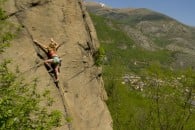

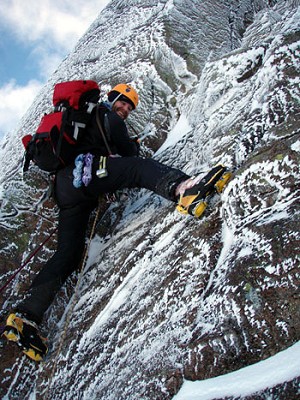
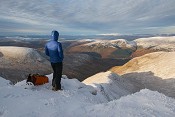

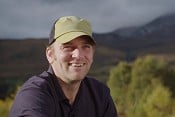
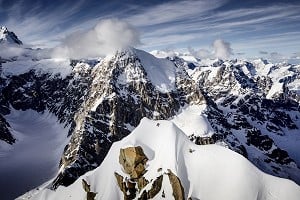





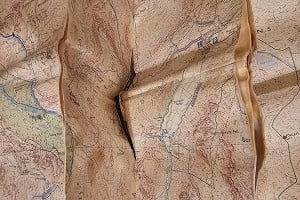
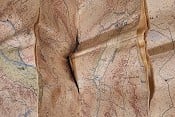
Comments